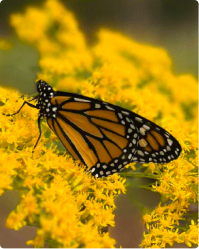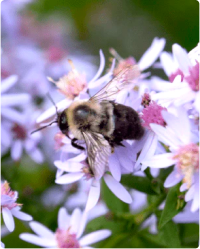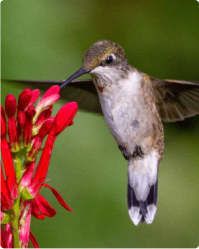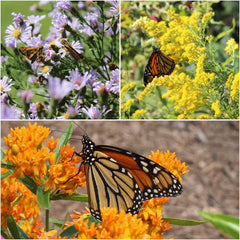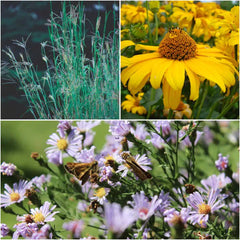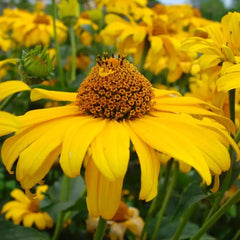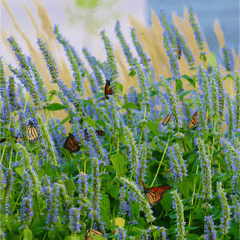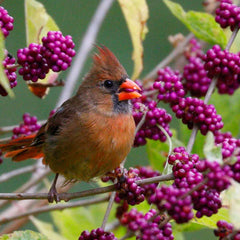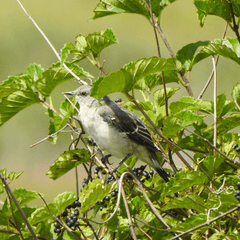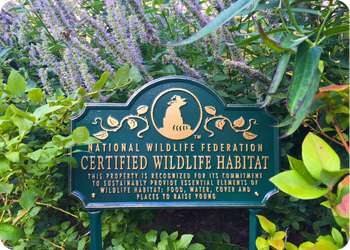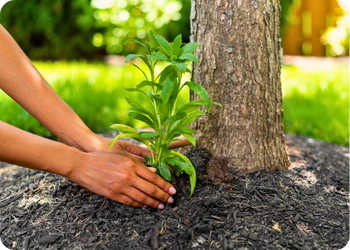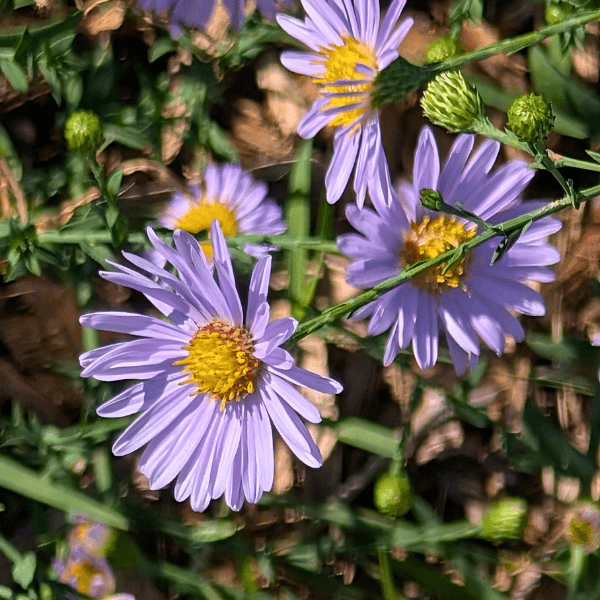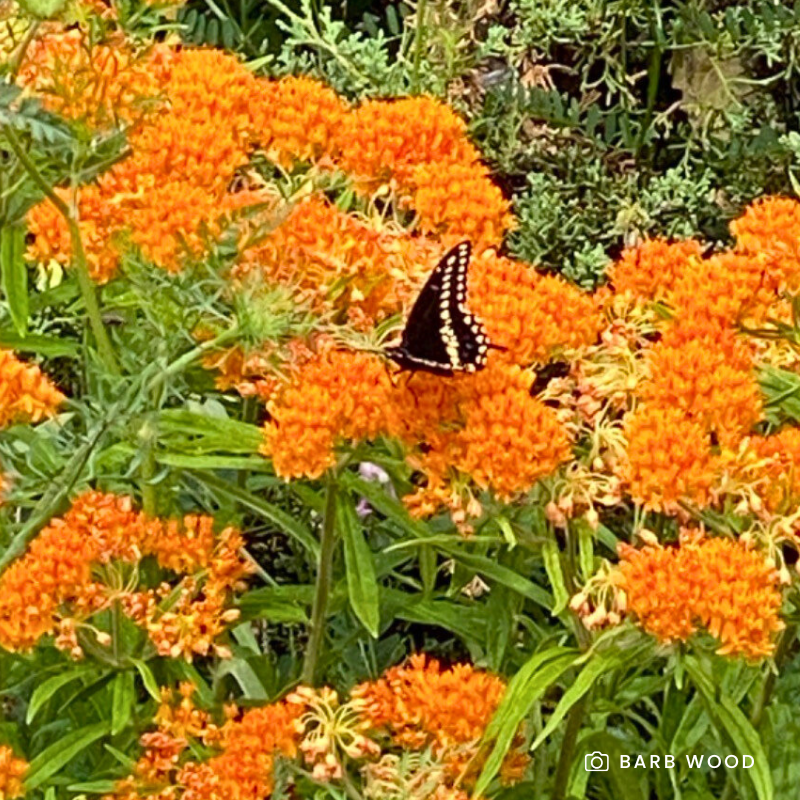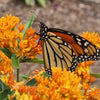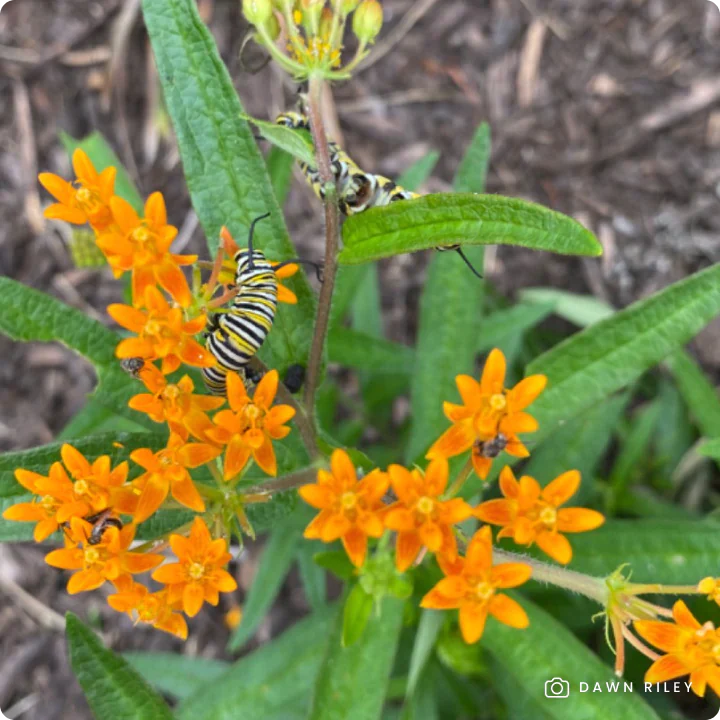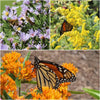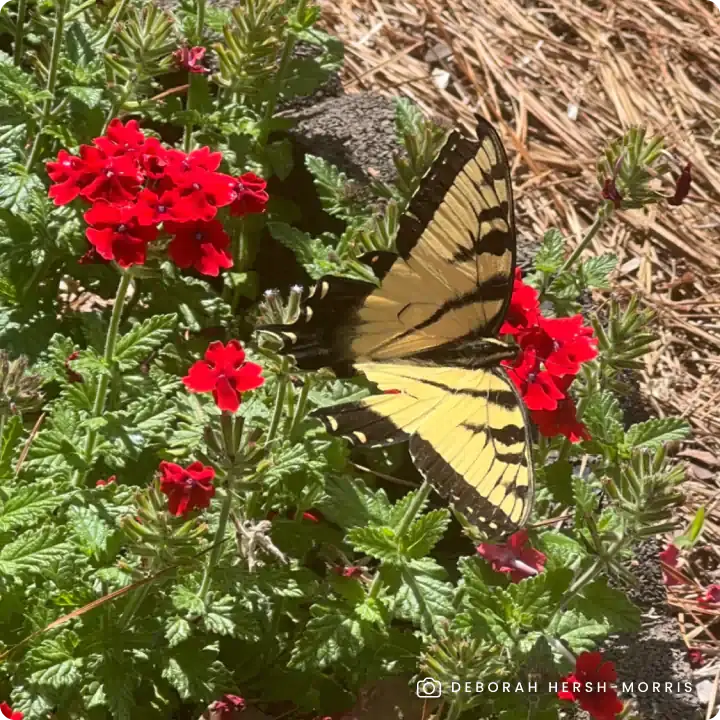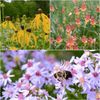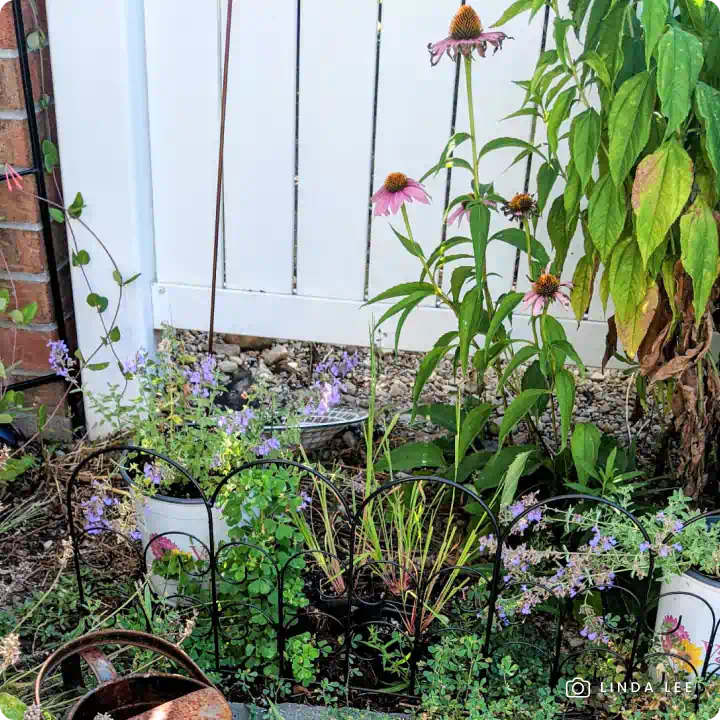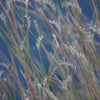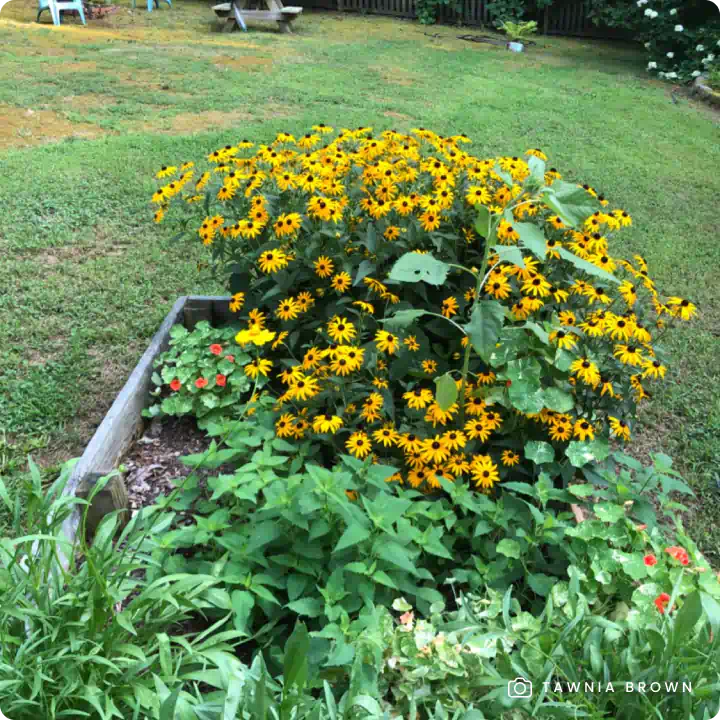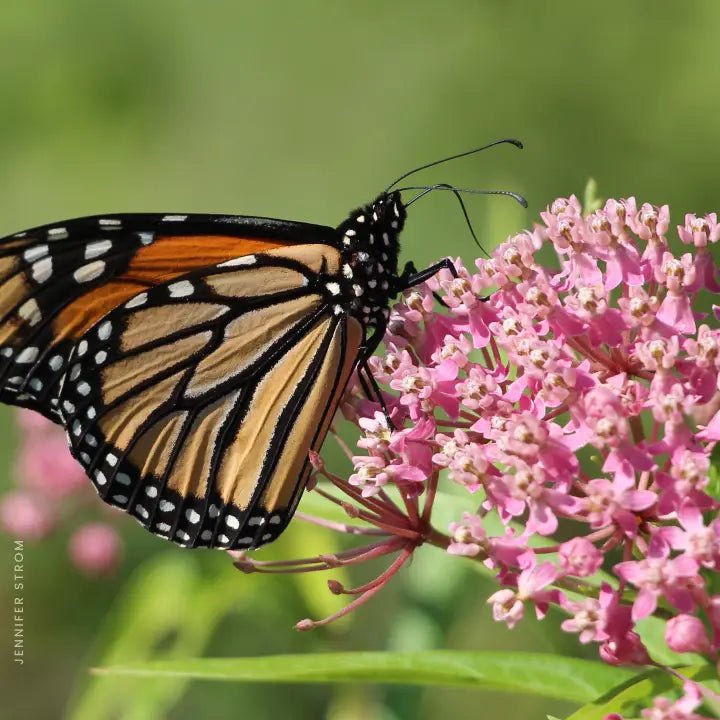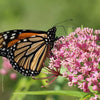Smooth Blue Aster (Symphyotrichum laeve (Aster laevis)) is a hardy native perennial that brings vibrant lavender-blue blooms to the garden late into the fall, providing a critical nectar source when many other flowers have faded. Its smooth, touchable leaves set it apart from other asters, and its profuse blooms attract a wide variety of pollinators. As a host plant for the silvery checkerspot and pearl crescent butterflies, smooth blue aster plays a vital role in supporting pollinator life cycles while adding lasting beauty to any landscape.
Key Features:
- Late-Season Blooms: Lavender-blue flowers bloom in abundance from late summer through fall, ensuring pollinators have essential nectar during a critical time.
- Pollinator & Wildlife Support: Attracts butterflies, bees, and moths with nectar-rich blooms, while also serving as a host plant for silvery checkerspot and pearl crescent butterfly larvae.
- Distinctive Foliage: Smooth leaves distinguish it from other asters, adding unique texture to garden plantings.
- Low Maintenance: Thrives with minimal care and requires less water once established, making it a perfect fit for sustainable gardens.
- Deer Resistant: Naturally resilient to deer browsing, ensuring its longevity in the landscape.
- Pollinator-safe: Grown non-GMO and free of harmful neonicotinoids, promoting a healthy ecosystem for pollinators and wildlife.
Available in sets of three, six, or 12 plants, allowing flexibility for gardens of any size.
Why Choose Smooth Blue Aster?
Smooth blue aster is an excellent choice for gardeners looking to extend their bloom season while also supporting pollinators and wildlife. Its hardy nature and adaptability make it a versatile addition to sunny borders, meadows, and naturalized gardens. With its late-season color and ecological benefits, this aster ensures gardens remain vibrant and lively well into the fall.
Planting Tips:
- Location: Thrives in full sun to part shade with well-drained soil.
- Watering: Water regularly during the first growing season to establish roots. Once mature, it requires minimal watering.
- Maintenance: Minimal care required. There's no need to deadhead the flowers, as allowing them to go to seed provides a valuable food source for birds. Leaving the stems standing in the fall offers overwintering sites for beneficial insects. If desired, cut back the stems in late spring after pollinators have emerged.
For more information on planting, view our How to Plant Your Native Plants guide and other planting tips in the Garden for Wildlife Learning Center.
Smooth blue aster is a must-have for any wildlife-friendly or pollinator-focused landscape. Its stunning blooms, ecological benefits, and easy-care nature make it a valuable addition to any garden.
